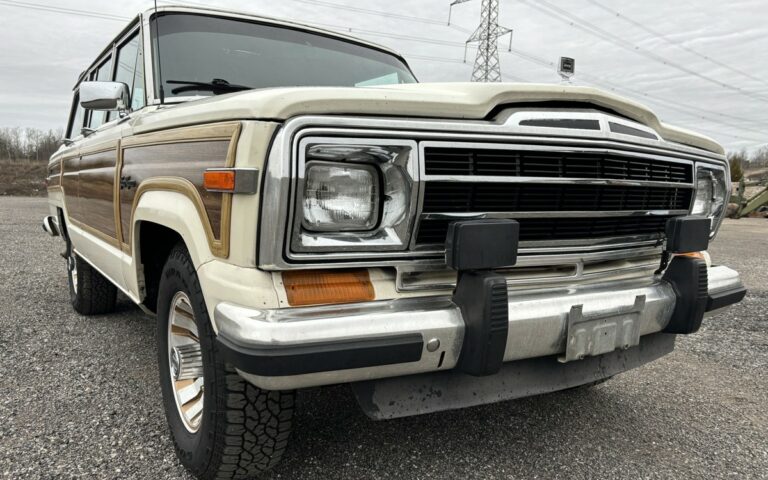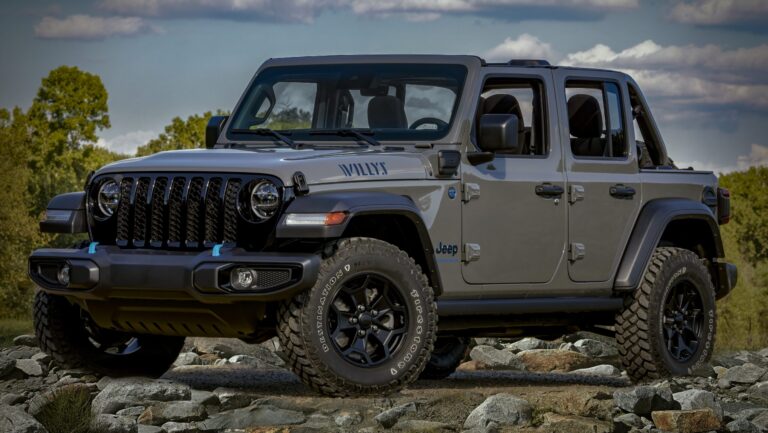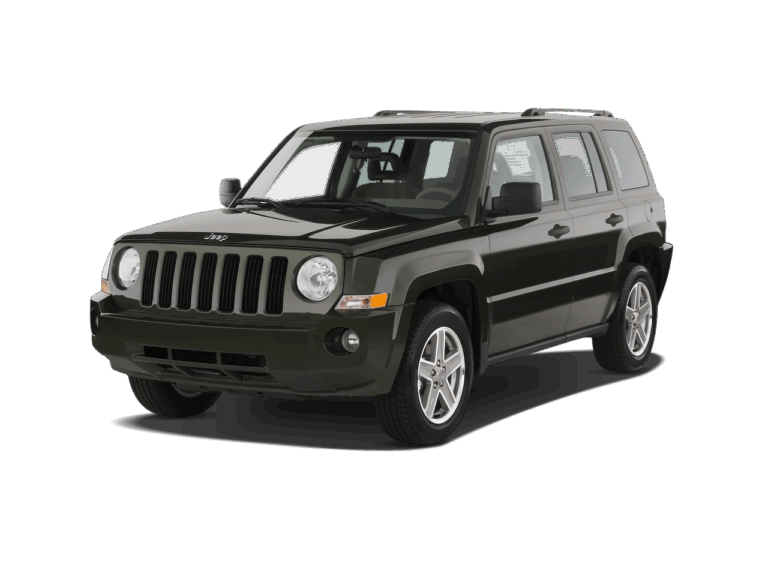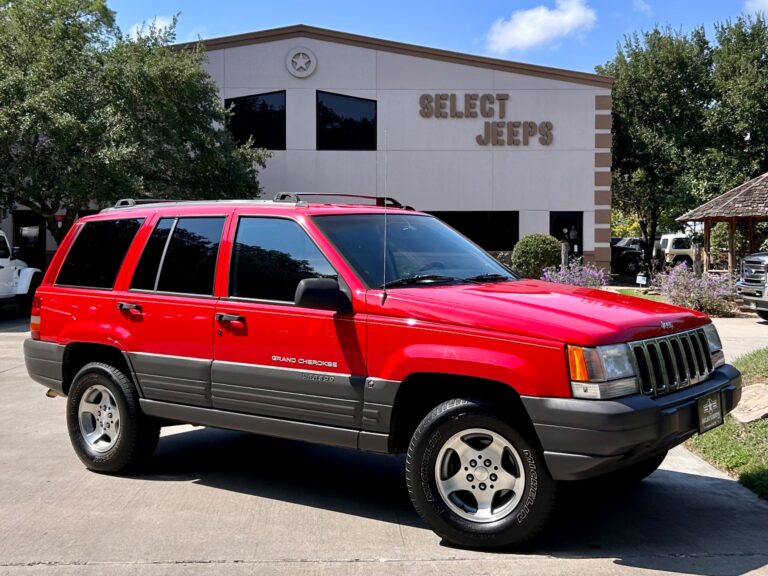Jeep Tow Bar For Sale: Your Ultimate Guide to Flat Towing Adventures
Jeep Tow Bar For Sale: Your Ultimate Guide to Flat Towing Adventures /jeeps.truckstrend.com
For many Jeep enthusiasts, the open road calls not just for driving their beloved 4×4, but for bringing it along on grander adventures. Whether it’s to serve as a reliable daily driver once you reach your RV campsite, a recovery vehicle for an expedition, or simply to move a disabled vehicle, the ability to flat tow your Jeep is an invaluable asset. At the heart of this capability lies a crucial piece of equipment: the Jeep tow bar.
A tow bar is a robust, rigid connecting device that links a vehicle being towed (the "toad" or "dinghy") to the towing vehicle, allowing all four wheels of the towed vehicle to remain on the ground. This method, known as "flat towing" or "four-down towing," is incredibly popular among RVers and off-roaders due to its simplicity, convenience, and efficiency compared to using a bulky car hauler or a tow dolly. If you’re considering expanding your travel horizons or need a practical solution for vehicle transport, understanding the ins and outs of a Jeep tow bar for sale is your first essential step. This comprehensive guide will walk you through everything you need to know, from selection and installation to maintenance and important considerations, ensuring you make an informed decision for safe and enjoyable towing.
Jeep Tow Bar For Sale: Your Ultimate Guide to Flat Towing Adventures
Why Flat Tow Your Jeep? The Appeal of a Tow Bar
The decision to flat tow a Jeep, rather than using a trailer or dolly, comes with a host of advantages that appeal to a wide range of users:
- Simplicity and Convenience: Hooking up a tow bar is generally much quicker and easier than loading a vehicle onto a trailer. There’s no need to deal with ramps, tie-downs, or the added complexity of maneuvering a long trailer.
- Reduced Wear and Tear: While the Jeep is still technically in motion, flat towing typically puts less stress on its drivetrain than a tow dolly (which keeps some wheels on the ground and spinning). Modern Jeeps, especially Wranglers and Gladiators with specific transfer cases, are designed for flat towing without significant mechanical strain when properly set up.
- Maneuverability: A flat-towed Jeep tracks behind the towing vehicle much like a trailer, but without the pivot point in the middle, making turns and backing up (though generally not recommended with a towed vehicle) simpler than with a full trailer.
- Fuel Economy: While towing always impacts fuel economy, a flat-towed vehicle typically presents less wind resistance and is lighter than a vehicle on a heavy trailer, potentially leading to marginally better fuel efficiency for the towing vehicle.
- Compact Storage: Many tow bars are designed to fold up or detach when not in use, taking up minimal space in your garage or on the back of your RV.
- Ideal for RVers: For those traveling in motorhomes, having a Jeep readily available for local excursions, grocery runs, or exploring trails inaccessible to a large RV, is a game-changer.

Jeep models like the Wrangler (JL, JK, TJ, YJ) and Gladiator are particularly popular for flat towing due to their robust construction, capable 4×4 systems, and a transfer case neutral position that disengages the drivetrain, making them ideal "toads."
Understanding the Components: What Makes a Jeep Tow Bar System?
A complete and safe flat towing setup involves more than just the tow bar itself. To truly understand a "Jeep tow bar for sale," you need to be familiar with all the essential components:

- The Tow Bar: This is the primary connection device, typically an A-frame or collapsible arm system that extends from the towing vehicle’s hitch receiver to the front of the towed Jeep. Quality tow bars are designed for specific weight capacities and ease of use.
- The Base Plate (or Bumper Mount): This is arguably the most critical component on the towed Jeep. It’s a custom-fabricated steel assembly that bolts directly to the frame of your specific Jeep model and year. The tow bar arms attach to this base plate. Some aftermarket bumpers for Jeeps come with integrated tow bar attachment points, eliminating the need for a separate base plate.
- Safety Cables/Chains: Federal regulations and common sense dictate the use of safety cables or chains as a redundant connection between the towing vehicle and the towed Jeep. These provide a critical failsafe in case the primary tow bar connection fails.
- Wiring Harness (for Lights): For safety and legal compliance, the towed Jeep’s brake lights, turn signals, and running lights must function in sync with the towing vehicle’s lights. A specialized wiring harness connects the two vehicles’ electrical systems, ensuring proper illumination.
- Auxiliary Braking System: This is a non-negotiable safety and legal requirement in most jurisdictions for towing vehicles over a certain weight (often 1,500-2,000 lbs, which includes virtually all Jeeps). An auxiliary braking system applies the brakes on the towed Jeep in conjunction with the towing vehicle’s brakes, significantly reducing stopping distances and preventing wear on the towing vehicle’s brakes. Types include:
- Proportional Systems: Apply the towed vehicle’s brakes with a force proportional to the towing vehicle’s braking.
- Surge Systems: Use the inertia of the towed vehicle pushing against the tow bar to activate its brakes.
- Air Brake Systems: Used primarily with large motorhomes equipped with air brakes.
- Portable Systems: Sit on the floor of the towed vehicle and press the brake pedal.
![]()
Types of Jeep Tow Bars: Choosing the Right Fit
When looking for a "Jeep tow bar for sale," you’ll encounter several variations, each with its own advantages:
- Non-Binding Tow Bars: These are the most popular and user-friendly. Their design allows for easy connection and disconnection, even if the towing and towed vehicles are not perfectly level or aligned on uneven terrain. This feature is a huge time-saver and frustration-reducer.
- Self-Aligning Tow Bars: These are designed to automatically align and lock into place as you back up the towing vehicle, simplifying the initial hook-up process.
- Heavy-Duty Tow Bars: Built with stronger materials and larger components, these are designed for heavier Jeeps or for users who frequently tow in challenging conditions, offering increased peace of mind.
- A-Frame Tow Bars: A traditional design, often more budget-friendly. They form a rigid A-shape when connected.
- Folding/Stowable Tow Bars: Many modern tow bars are designed to fold up and remain attached to the towing vehicle’s hitch receiver when not in use, saving storage space and eliminating the need to remove and re-install the bar each time.
- Brand-Specific Systems: Major manufacturers like Blue Ox, Roadmaster, Demco, and SMI (now part of Demco) offer complete towing solutions, including tow bars, base plates, and braking systems, often designed to work seamlessly together. Aftermarket Jeep brands like Currie Enterprises, Smittybilt, and Rock Hard 4×4 also offer tow bar compatible bumpers.
Key Considerations When Buying a Jeep Tow Bar
Making an informed purchase is crucial for safety and satisfaction. Here’s what to keep in mind:
- Towing Capacity: Always ensure the tow bar’s maximum towing capacity exceeds your Jeep’s Gross Vehicle Weight Rating (GVWR). Never exceed the rated capacity of any component in your towing system.
- Vehicle Compatibility: The base plate or bumper must be specifically designed for your Jeep’s make, model, and year. Generic solutions are rarely safe or effective for this component.
- Ease of Connection/Disconnection: If you plan to tow frequently, a non-binding, easy-to-use tow bar will save you considerable time and effort.
- Durability and Construction Material: Look for high-quality steel or aluminum construction with durable finishes to resist corrosion. Reputable brands offer better longevity.
- Safety Features: Beyond the basic components, consider features like integrated safety cable attachment points, ease of inspecting connections, and clear indicators for proper hook-up.
- Installation Complexity: While the tow bar itself is often straightforward to attach, installing the base plate can be complex, often requiring drilling and precise alignment. Consider whether you’ll DIY or opt for professional installation.
- Budget: Tow bar systems range widely in price. While it’s tempting to save money, compromising on safety components is never advisable. Factor in the cost of the tow bar, base plate, wiring harness, and especially the auxiliary braking system.
Where to Find Jeep Tow Bars For Sale
The market for Jeep tow bars is robust, offering options for every budget and need:
-
New Products:
- Online Retailers: Websites like Quadratec, ExtremeTerrain, Summit Racing, Amazon, eTrailer.com, and RV supply specialists (e.g., Camping World) offer a vast selection from various manufacturers. They often provide detailed product descriptions, reviews, and compatibility guides.
- RV Supply Stores: Dedicated RV dealerships and parts stores often carry complete towing systems and can offer installation services.
- Off-Road/Jeep Specialty Shops: Local and online stores specializing in Jeep parts and accessories frequently stock tow bar compatible bumpers and specific tow bar brands popular within the off-road community.
- Direct from Manufacturer Websites: Blue Ox, Roadmaster, Demco, etc., often sell directly or through authorized dealers listed on their sites.
-
Used Products:
- Online Marketplaces: eBay, Craigslist, and Facebook Marketplace can be good sources for used tow bars and components.
- Local Classifieds: Check local newspapers or community boards.
- RV/Off-Road Forums: Dedicated online communities often have classified sections where members sell used gear.
- Caution for Used Purchases: While potentially cost-effective, buying used requires extreme caution. Thoroughly inspect the item for any signs of damage, stress cracks, excessive wear, or missing components. Verify its towing capacity and ensure it’s compatible with your specific Jeep model. Always prefer complete systems that haven’t been modified or repaired.
Installation and Maintenance Tips
-
Installation:
- Read the Manuals: Meticulously follow the installation instructions for both the tow bar and, critically, the base plate.
- Base Plate Complexity: Base plate installation often involves removing the front bumper, drilling holes, and precise alignment. If you’re not comfortable with automotive mechanics, professional installation is highly recommended for safety.
- Torque Specs: Ensure all bolts are tightened to the manufacturer’s specified torque settings.
- Wiring: Take your time with the wiring harness to ensure all connections are secure and weatherproof. Test all lights before your first tow.
-
Maintenance:
- Pre-Trip Checklist: Before every tow, conduct a thorough inspection:
- Are all tow bar connections secure and locked?
- Are safety cables properly attached and free of kinks?
- Are the lights working correctly?
- Is the auxiliary braking system functioning?
- Are tires on both vehicles properly inflated?
- Is the towed Jeep’s transfer case in neutral (if applicable) and transmission in park/gear?
- Cleanliness: Keep the tow bar and its moving parts clean, especially after off-road excursions.
- Lubrication: Periodically lubricate pivot points and moving parts as recommended by the manufacturer.
- Inspect for Wear: Regularly check for cracks, bends, excessive play, or corrosion on all components. Replace any worn or damaged parts immediately.
- Storage: When not in use, store the tow bar in a clean, dry place to prevent rust and damage.
- Pre-Trip Checklist: Before every tow, conduct a thorough inspection:
Potential Challenges and Solutions
While flat towing is convenient, awareness of potential issues is key:
- Wobble or Sway: If the towed Jeep exhibits excessive sway, check tire pressures on both vehicles, ensure the tow bar is level, and verify the auxiliary braking system is working correctly. Sometimes, worn steering components on the Jeep itself (e.g., tie rod ends, ball joints) can contribute, making a pre-tow inspection of the Jeep’s front end vital.
- Legal Requirements: Towing laws vary significantly by state and country. Always research and comply with local regulations regarding auxiliary braking systems, safety chains, and maximum towing speeds.
- Vehicle Damage: Incorrect setup, exceeding weight capacities, or failure to properly disengage the towed Jeep’s drivetrain (if required) can lead to serious mechanical damage. Always double-check your setup.
- "Death Wobble" (of the towed vehicle): While often associated with Jeeps, the "death wobble" when towing is almost always a pre-existing condition of the Jeep’s steering or suspension components that is exacerbated by towing forces. Ensure your Jeep is in excellent mechanical condition, especially the front end, before towing.
Jeep Tow Bar For Sale: Price Table (Estimated)
Please note that prices are estimates and can vary significantly based on brand, features, material, and where you purchase the item. Installation costs are not included.
| Product/Category | Type/Description | Key Features | Compatibility | Est. Price Range (USD) |
|---|---|---|---|---|
| Tow Bars | ||||
| Blue Ox Avail | Non-binding, Aluminum, 10,000 lbs cap. | Self-aligning, easy disconnect, safety cables included. | Universal (with specific base plate) | $700 – $1,000 |
| Roadmaster Falcon All-Terrain | Non-binding, Steel, 6,000 lbs cap. | Non-binding arms, folds for storage, includes safety cables. | Universal (with specific base plate) | $600 – $900 |
| Demco Dominator | Non-binding, Steel, 7,500 lbs cap. | Easy hook-up, durable steel construction, integrated cable guides. | Universal (with specific base plate) | $650 – $950 |
| Smittybilt XRC Gen2 Bumper | Steel, integrates D-ring mounts | Tow bar tabs, heavy-duty recovery points, winch ready. | Specific Jeep models (e.g., JK/JL Wrangler) | $400 – $800 (bumper) |
| Currie Enterprises Tow Bar | Heavy-duty, adjustable arms, 10,000 lbs cap. | Robust for off-road Jeeps, durable construction, specific mounts. | Specific Jeep models (e.g., TJ/LJ/JK) | $700 – $1,100 |
| Base Plates | ||||
| Blue Ox Base Plate | Custom fit, steel | Hidden design, removable tabs. | Specific Jeep model/year | $300 – $600 |
| Roadmaster Base Plate | Custom fit, steel | Clean appearance, easy installation (for professional). | Specific Jeep model/year | $300 – $600 |
| Auxiliary Braking Systems | ||||
| Blue Ox Patriot II | Portable, proportional, electric | Easy setup, proportional braking, works with most vehicles. | Universal (in towed vehicle) | $1,200 – $1,600 |
| Roadmaster BrakeMaster | Air brake (for RVs), proportional | Connects to RV’s air brakes for seamless operation. | Universal (requires RV air brakes) | $1,000 – $1,400 |
| Demco Stay-IN-Play DUO | Permanent, proportional, electric | Always ready, proportional braking, 12V supply. | Universal (installed in towed vehicle) | $900 – $1,300 |
| Wiring Harnesses | ||||
| Universal Diode Kit | Protects vehicle’s electrical system | Prevents feedback, allows shared lighting functions. | Universal (requires custom wiring) | $50 – $150 |
| Plug-and-Play Kit | Vehicle-specific | Simplifies installation, no cutting/splicing wires. | Specific Jeep model/year | $150 – $300 |
Frequently Asked Questions (FAQ)
Q1: Can all Jeeps be flat-towed?
A1: Not all. Most modern 4×4 Jeeps, particularly the Wrangler (JK, JL) and Gladiator, are designed for flat towing because their transfer cases have a "neutral" position that disengages the drivetrain. Older models or 2WD Jeeps might require driveshaft disconnection or a tow dolly. Always check your Jeep’s owner’s manual for specific flat towing instructions and requirements.
Q2: Do I need a separate braking system for the towed Jeep?
A2: Yes, absolutely. In most U.S. states and Canadian provinces, an auxiliary braking system for the towed vehicle is legally required if the towed vehicle exceeds a certain weight (typically 1,500-2,000 lbs), which a Jeep easily does. More importantly, it’s a critical safety feature that significantly reduces stopping distances and prevents excessive wear on the towing vehicle’s brakes.
Q3: How do I know what size or capacity tow bar I need?
A3: You need a tow bar with a towing capacity that exceeds the Gross Vehicle Weight Rating (GVWR) of your Jeep. You can find your Jeep’s GVWR on a sticker inside the driver’s side door jamb or in your owner’s manual.
Q4: Is it hard to install a tow bar system myself?
A4: The tow bar itself is usually straightforward to connect to a hitch receiver. However, installing the base plate on your Jeep can be complex, often requiring the removal of the bumper, drilling, and specific torque settings. Installing the auxiliary braking system and wiring harness also requires some mechanical and electrical knowledge. Many choose professional installation for the base plate and wiring to ensure safety and proper function.
Q5: What’s the difference between a tow bar and a tow dolly?
A5: A tow bar connects directly to the front of the towed vehicle, allowing all four wheels to remain on the ground (flat towing). A tow dolly lifts only the front two wheels of the towed vehicle off the ground, with the rear wheels remaining on the road. Flat towing is generally preferred for 4×4 Jeeps due to their design and the simplicity it offers.
Q6: Do I need to disconnect the driveshaft on my Jeep when flat towing?
A6: For most modern 4×4 Jeeps (like the Wrangler JK/JL and Gladiator) that have a transfer case with a neutral position, you do not need to disconnect the driveshaft. Simply shifting the transfer case into neutral and the transmission into park (automatic) or gear (manual) is sufficient. Always consult your Jeep’s owner’s manual for precise instructions. Older models or those without a neutral transfer case might require driveshaft disconnection.
Concluding Summary
Investing in a quality Jeep tow bar for sale opens up a world of possibilities for adventure, convenience, and peace of mind. Whether you’re an avid RVer looking for a nimble exploration vehicle or simply need a reliable way to transport your Jeep, flat towing offers an unparalleled solution. By understanding the essential components, considering your specific needs, and prioritizing safety above all else, you can select the perfect tow bar system to complement your Jeep and enhance your travels. Always remember that a properly chosen, installed, and maintained tow bar system is not just a convenience; it’s a critical safety investment that ensures your Jeep arrives at your destination just as ready for adventure as you are. Happy trails!





